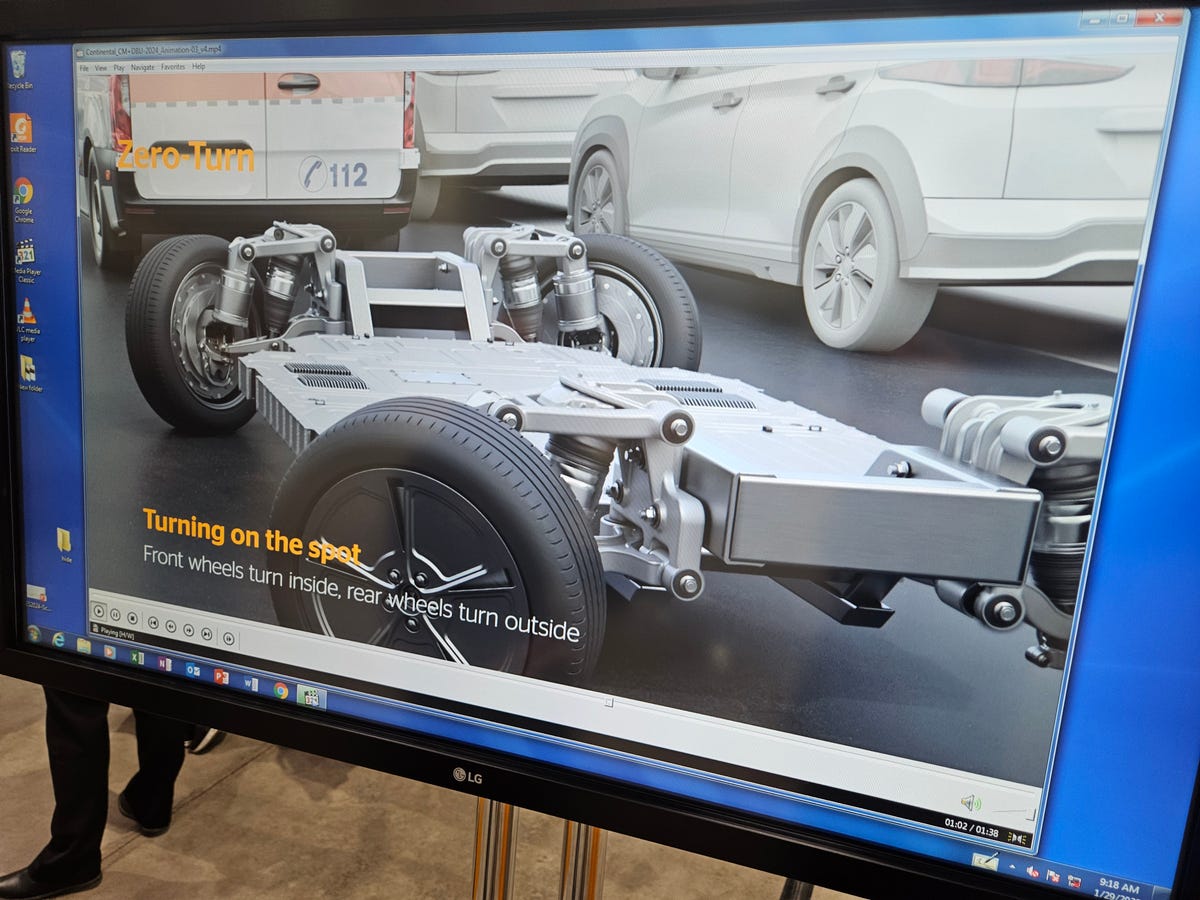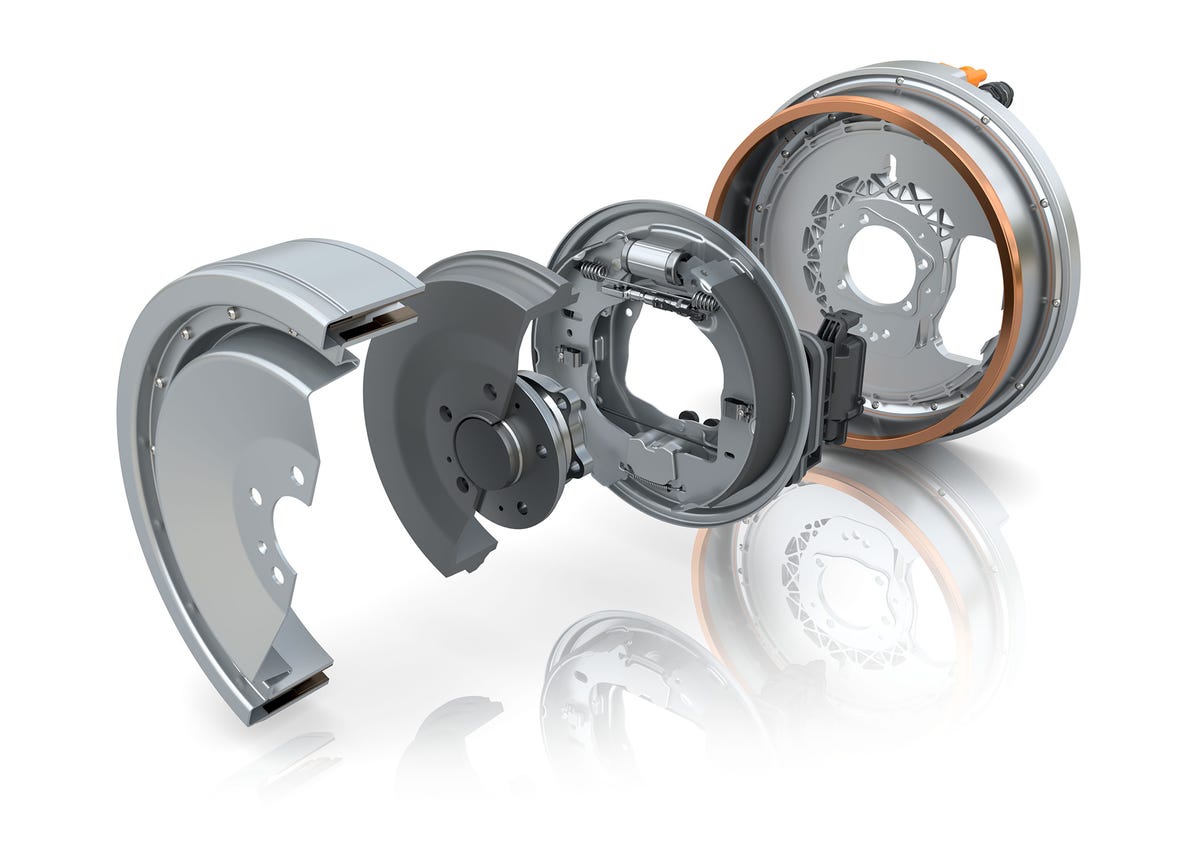- The German company Continental indicates that it is nearing production readiness for wheel hub motors that incorporate braking systems. These brakes can be either discs or drum types, as well as hydraulic or dry brake-by-wire configurations based on the customer’s preference.
- Conti plans to encase its brake parts along with a uniquely designed dual-rotor, radial-flux engine from DeepDrive for powering the wheels.
- The technology is set to be ready for use very soon, according to the partners, and they anticipate signing an agreement shortly with a European car manufacturer for production to start in 2028.
The idea of incorporating an electric motor into the wheel hub of a battery-powered car—not traditionally located beneath the hood where an internal combustion engine would be—is not novel. Ferdinand Porsche demonstrated the technology over 120 years ago.
What's novel is the news that the long-standing German auto parts maker Continental might be poised to secure a deal to produce this technology for an actual car model. Moreover, they could go a step beyond by incorporating brake components into the hubs of each wheel.
In addition to the advantages in packaging and decreased total weight, Conti suggests that this Drive-Brake System could enhance the vehicle’s efficiency and enable the use of a smaller battery. This might potentially cost the same as assembling an electric vehicle conventionally, while also incorporating all-wheel drive and torque vectoring capabilities.
Continental boasts an extensive background in manufacturing and distributing automotive parts like brakes and electronics (as well as producing Continental tires). Therefore, the hydraulics for the braking system in this novel Drive-Brake Unit originate from Continental, whereas the drive components are supplied by a different firm based in Germany.
Headquartered in Munich, motor manufacturer DeepDrive has teamed up with Conti to create a compact wheel hub drive. According to them, this new development is not only efficient and potent but also suitable for all types of lightweight vehicles and can be produced at an economical cost. The aim, from a systems perspective, is to ensure the pricing matches that of traditional motors and braking systems for modern electric vehicles.
Although DeepDrive is just three years old as a startup, it introduces groundbreaking technology with a patented dual-rotor, radial-flux engine. This motor can be configured either as a centralized drive system—a standard setup nowadays—or as a wheel-hub drive for mass-produced cars.

Continental engineers claim that the technology will be ready for use on roads shortly, featuring advanced braking systems. They also mention that they are nearing an agreement with a European car manufacturer for starting production as early as 2028.
It remains unclear whether Continental will be the first to bring this technology to market, as competitors like ZF, ADVICS, and others are likely pursuing comparable advancements.
Although this initial implementation will utilize hydraulic braking, the firm asserts that the technology also functions with dry brake-by-wire systems, compatible with both drum and disc brakes as per the automaker’s preference.
You might think packaging would be tight for both a motor and braking components at each hub, but Continental actually says a further step is possible to also integrate chassis components, such as air suspension hardware, in a compact unit directly on the wheel.
Conti oversees the comprehensive integration of DeepDrive’s technology and the manufacturing process for the corner module.
Even as the automotive sector has been shifting from drum to disc brakes over many years, Drum brakes are actually undergoing a resurgence. In today’s electric vehicle age, they are less susceptible to rust (though they have a tendency to overheat more compared to disc brakes).

“With EVs, electric motors handle a lot of deceleration,” Peter Olejnik, head of innovation for chassis systems for Conti North America, tells at the supplier’s recent technology fair.
"When you ease up on the gas pedal, the engine stops producing power and instead acts as a generator. This enables the system to capture energy and feed it back into the battery via regenerative braking," he explains.
Therefore, regenerative braking takes precedence in modern electric vehicles, often resulting in minimal use of the rear brakes at times.

As per Olejnik, you may face corrosion on the rear disc brakes, and preventing this would require applying an costly protective coat on the disc brakes.
Meanwhile, Disc brakes offer greater protection. From the environmental standpoint, they are more cost-effective and do not corrode as readily, he notes. Because of these reasons, Conti plans to start manufacturing drum brakes for an electric truck in 2026.
Do you think a wheel hub motor with integrated braking is a smart technology for next-generation EVs? Please comment below.
Interested in buying a car? Discover your perfect match on the MSN Autos Marketplace.